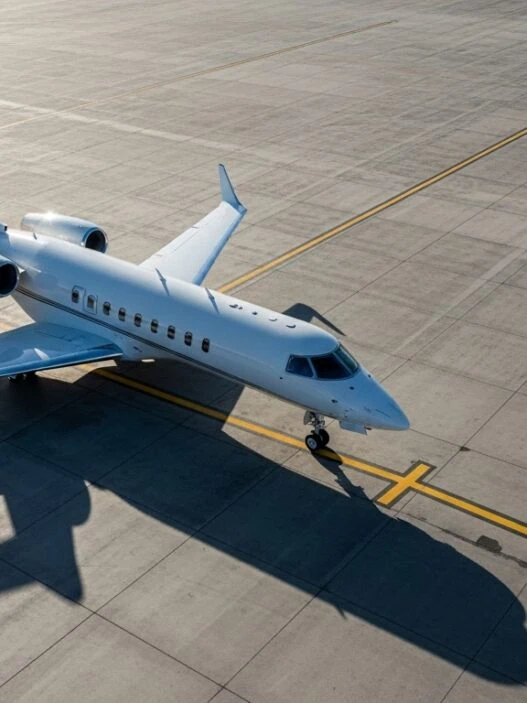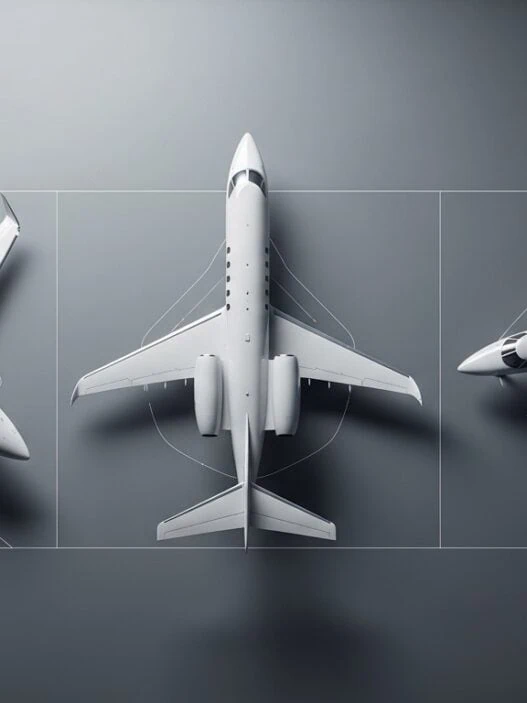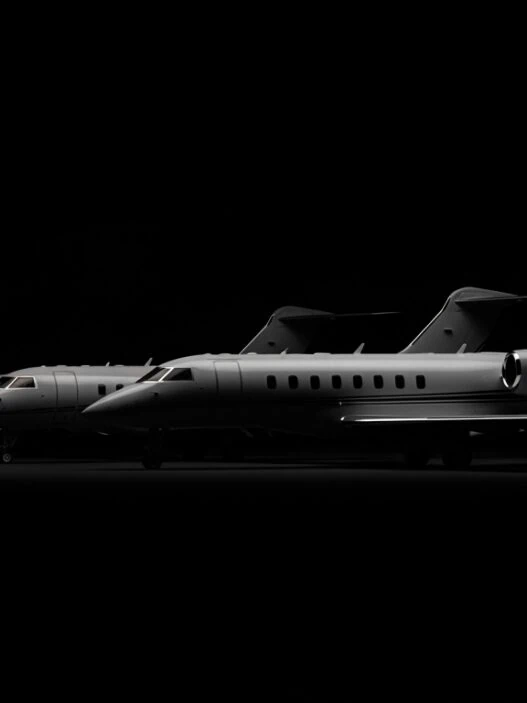Private Jet Travel Trends 2025: The Industry Revolution Nobody Saw Coming
Private jet travel trends 2025 are reshaping the aviation industry in ways that go far beyond luxury upgrades. While everyone expected incremental improvements, this year has delivered fundamental shifts in who’s flying, how they’re flying, and why traditional aviation assumptions no longer apply.
The numbers tell a story that aviation executives didn’t predict: global private jet activity increased 8% year-over-year in Q1 2025, with the United States representing 69.1% of all recorded flights, according to WingX data. But the real revelation isn’t volume—it’s who’s driving that growth and how they’re changing everything.
Sustainable Aviation Fuel: The Private Jet Travel Trends 2025 Game Changer
The most significant private jet travel trends 2025 development isn’t happening in cabins or cockpits—it’s happening in fuel systems. Sustainable Aviation Fuel (SAF) adoption has moved from marketing promise to operational reality, with major operators reporting 340% increases in SAF usage compared to 2023.
Many travelers wonder: are private jets becoming more environmentally friendly in 2025? The answer is definitively yes. ACC Aviation’s sustainability research reveals that high-net-worth travelers now specifically request eco-conscious operators, making environmental responsibility a competitive advantage rather than corporate social responsibility theater.

Private jet operators have responded by partnering with carbon offset organizations, investing in SAF infrastructure, and redesigning flight operations around efficiency optimization. The trend reflects broader luxury aviation industry changes where environmental consciousness enhances rather than compromises premium positioning.
AI-Powered Maintenance: Invisible Innovation in Modern Private Aviation
One of the most underreported private jet travel trends 2025 involves artificial intelligence revolutionizing aircraft maintenance through predictive analytics. AI systems now identify service needs before they cause operational disruptions, reducing unscheduled maintenance by 23% industry-wide.
How is AI changing private jet maintenance in 2025? The technology enables operators to predict component failures weeks in advance, dramatically improving reliability for passengers who depend on schedule consistency for business operations.
This technological advancement directly impacts the customer experience by improving reliability and reducing delays. Paramount Business Jets reports that AI-powered maintenance has become a standard expectation among frequent charter clients who prioritize schedule reliability over traditional luxury amenities.
The 18-35 Demographic: What Young Wealthy Travelers Want
Perhaps the most transformative private jet travel trends 2025 development involves generational change among private aviation users. According to industry analysis, 81% of affluent 18-35-year-olds work remotely, fundamentally altering how they approach luxury aviation services.
What do younger private jet travelers prioritize? This demographic enters private aviation much younger than previous generations, seeking flexibility, wellness features, and connectivity that enable productive work during flight. They prioritize functional amenities over traditional luxury markers, preferring aircraft that function as airborne offices rather than status symbols.
Understanding how this demographic books private aviation reveals preferences for membership-based access models that offer transparent pricing and instant confirmation over relationship-dependent charter arrangements that older clients favor for their established networks.

Wellness-Focused Aviation: Health-Conscious Private Jet Features
Among the most visible private jet travel trends 2025 changes are cabin modifications designed around passenger wellness optimization. Advanced air filtration systems, circadian rhythm lighting, and wellness-focused amenities have moved from experimental features to standard expectations.
What wellness features are trending in private jets? Private jet manufacturers now integrate biometric monitoring, air quality optimization, and ergonomic design principles into cabin layouts. The luxury travel industry trends toward wellness reflect broader cultural shifts where health optimization has become a primary luxury market driver.
Operators report that wellness-focused cabin features particularly appeal to younger clients who view travel as part of broader lifestyle optimization rather than temporary luxury indulgence. This influences everything from catering options to seat design and onboard activity planning.
Off-Season Luxury Travel: Strategic Timing in Private Aviation
The most practical private jet travel trends 2025 development involves strategic timing optimization that maximizes both value and experience quality. April and October have emerged as premium travel months, with operators reporting higher booking volumes during traditionally slower periods.
Why are travelers choosing off-season private jet travel? According to Harper’s Bazaar travel trend analysis, travelers now specifically target off-season periods to access exclusive destinations without crowds while benefiting from improved pricing and availability.
This timing strategy enables private jet travelers to access premium accommodations and experiences that become unavailable during peak seasons due to overcrowding. Understanding optimal private jet routes and airport access becomes crucial for maximizing off-season travel advantages.

Technology Integration: The Future of Luxury Aviation Connectivity
Advanced connectivity solutions and onboard technology integration represent growing private jet travel trends 2025 priorities, particularly among business travelers who require seamless productivity during flight. High-speed internet, collaborative workspace configurations, and secure communication systems have become standard expectations.
How is technology changing the private jet experience? The integration extends beyond basic connectivity to include AI-powered travel coordination, automated logistics management, and predictive service customization that anticipates passenger preferences based on historical data and real-time inputs.
Infrastructure Expansion: Access Revolution in Private Aviation
Supporting private jet travel trends 2025 growth, fixed-base operator infrastructure has expanded significantly, with new facilities improving service quality and geographic accessibility. This infrastructure development enables more convenient access to previously underserved markets while maintaining service standards.
The expansion particularly benefits travelers seeking alternative luxury destinations that offer exclusive experiences without the congestion associated with traditional luxury travel hubs, making strategic route planning increasingly important for optimal travel experiences.
Market Evolution: Understanding Private Jet Travel Trends 2025
Private jet travel trends 2025 collectively represent fundamental industry maturation rather than incremental luxury improvements. Sustainability initiatives, AI-powered maintenance systems, demographic shifts toward younger users, wellness-focused cabin features, and strategic timing optimization reflect broader changes in how affluent individuals approach travel and lifestyle design.
What do these aviation trends mean for travelers? The trends suggest that private aviation is evolving from status-driven luxury consumption toward utility-focused lifestyle infrastructure that enables global mobility while supporting personal and professional optimization goals.
Understanding current private jet industry changes reveals an industry responding to changing client expectations while maintaining the flexibility, privacy, and efficiency advantages that distinguish private aviation from commercial alternatives. The business aviation trends 2025 indicate continued growth driven by genuine value creation rather than traditional luxury marketing approaches.




















